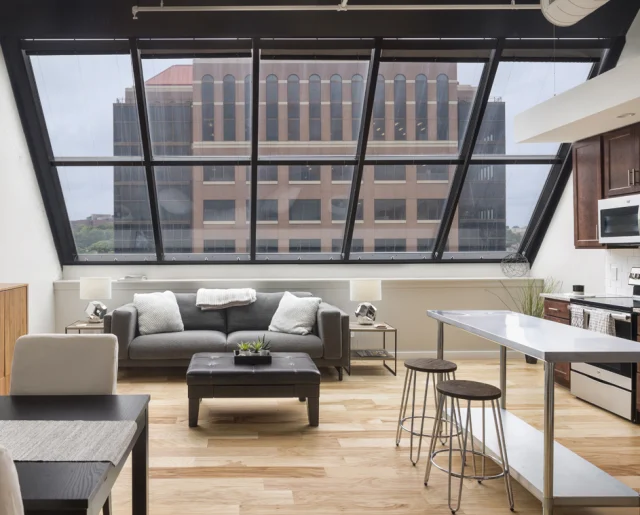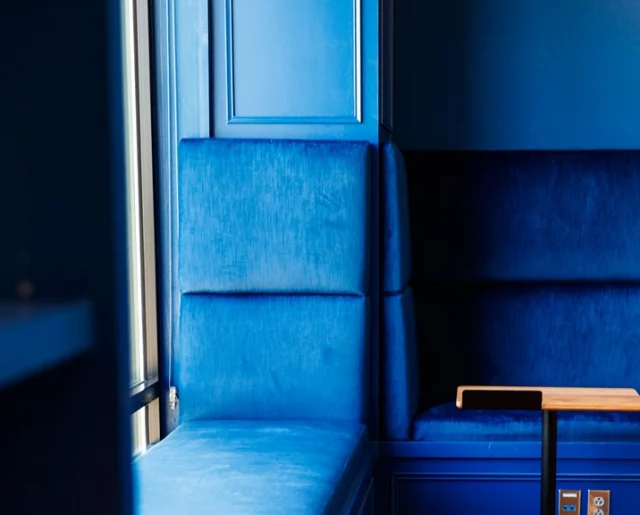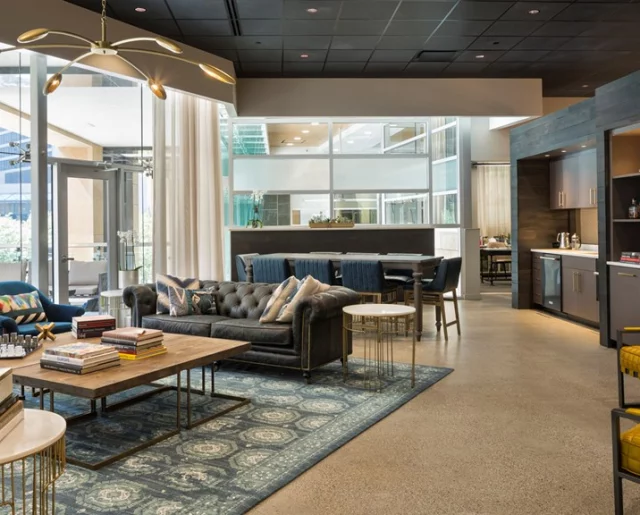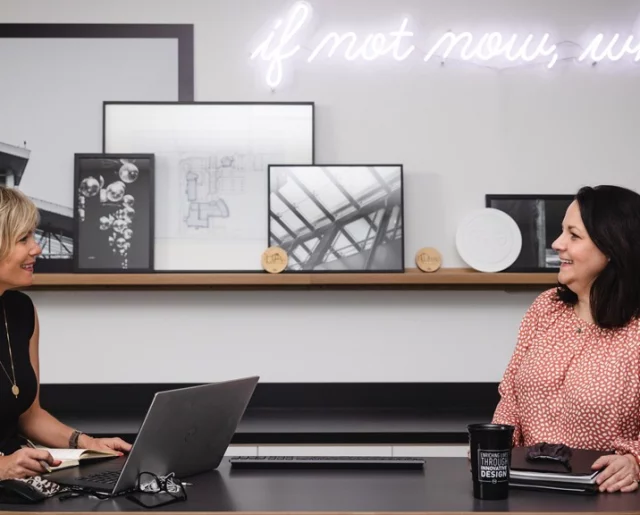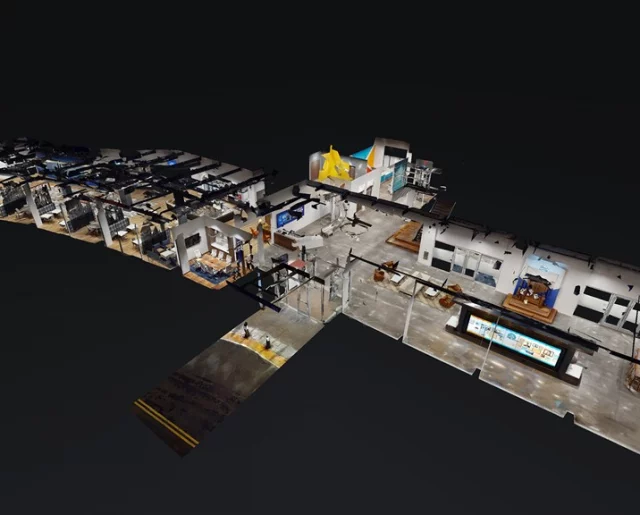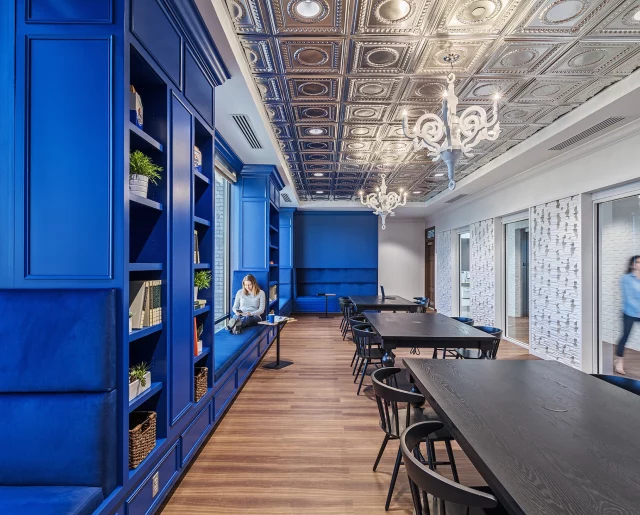Past, Present and Future of Workplace Design
Kaitlin Kingrey, MA Associate, Senior Interior Designer, recently participated in a panel discussion on the Past, Present and Future of Commercial Real Estate, alongside some of Columbus’ top professionals: Michael Copella of CBRE and Ian Labitue of Kaufman Development.
The panelists discussed the ever-changing landscape of what makes Columbus a hotspot for businesses and its impact on the commercial real estate market. Kaitlin, a workplace design expert, having completed projects like the White Castle Home Office, NAI Ohio Equities HQ, and Borror HQ, spoke to various trends regarding return to work, and the future of workspaces and commercial real estate.
Below, Kaitlin shares her key takeaways and the topics she’s marking “need to know” for the workplace of the future – both in space and in function.
Employees don’t want to feel like “just a number.”
The workplace of the future needs to be both holistic and human-centric. With an uptick of ethically-charged concepts like diversity, equity and inclusion making their way into the workplace, as well as ERG’s (Employee Resource Groups) acting as drivers for change, it may seem obvious, but – it’s critical that the physical workplace is designed to respond to the individuals who are using it.
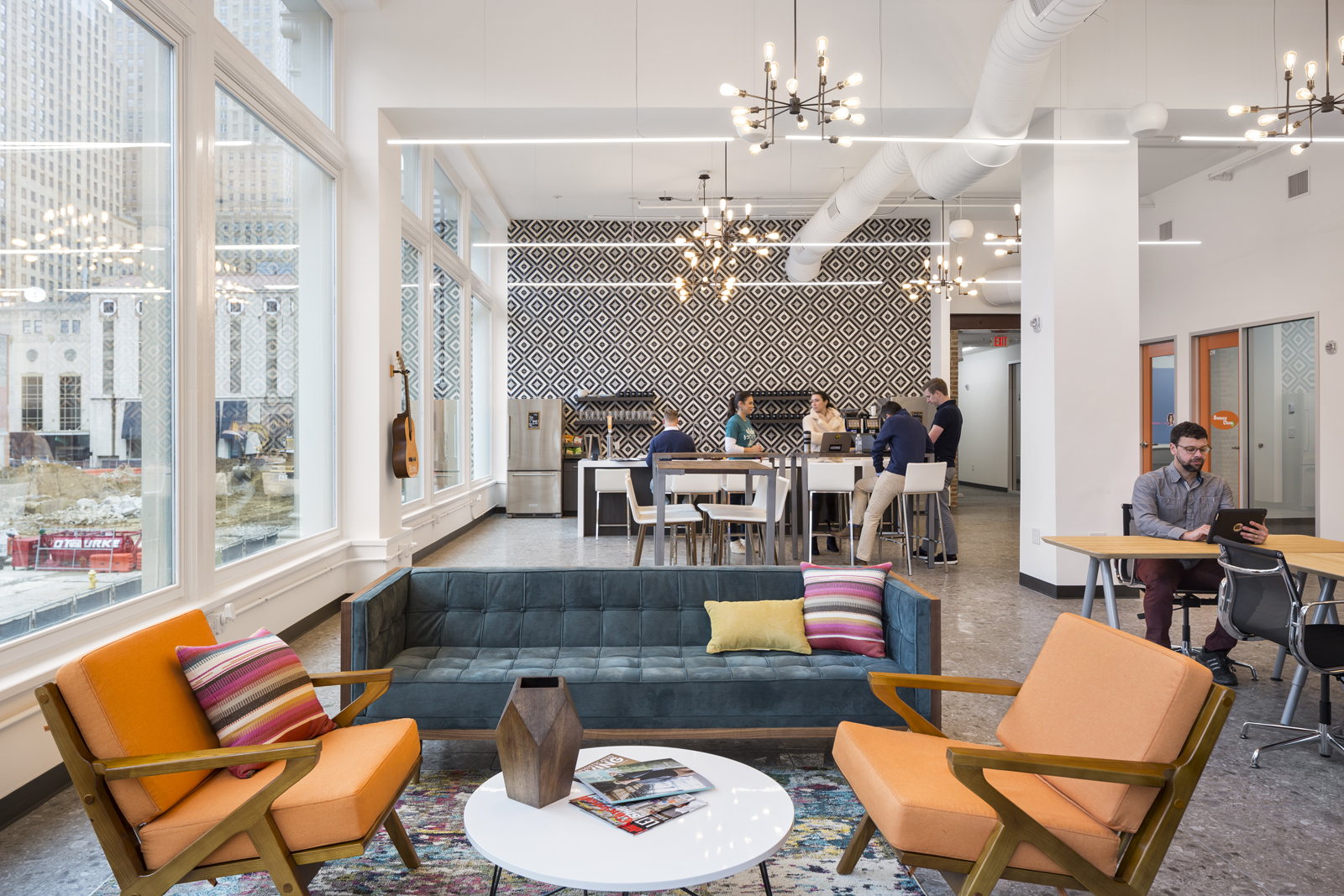
In terms of attraction, retention, and employee satisfaction, an inclusive workplace is more important than ever. Using design to make sure everyone feels heard and supported can be accomplished in a number of ways, such as through the strategic inclusion of safe spaces designed to promote mental wellness. The design of such a “Respite Room”, or mental health-focused space designed using evidence-based research, has been psychologically proven to calm the central nervous system and decrease even the most heightened emotional state of being – a panic attack – in 20 minutes or less.
Spaces designated to support mental health are just one example of how to design with the employee in mind, and it’s important to note that the most successful design begins long before the pen hits the paper. Initial pre-design exercises are a key factor in identifying effective workplace design strategies – keeping in mind that there simply is no one-size-fits-all solution. Every company has its own unique culture, and each company’s employees will require different tools in order to increase their efficiency and satisfaction. So – what works today? And where can we improve? Asking introspective questions like these, and taking a good, hard look at what your people really want – building alignment through interviews, surveys, and data – is the best way to create a design that will actually work.
Employees don’t want “just a paycheck.”
“The Great Resignation” we are experiencing is a result of employees reflecting, repositioning, and reevaluating their priorities in a post-pandemic life. Company culture is no longer just a feel-good talking point, it’s the very reason a qualified interviewee would select Company A over Company B. Perhaps most importantly, culture is the one thing employees cannot replicate in a work-from-home environment. Younger generations are seeking out value-driven, community-centric employers who possess a strong cultural identity – companies whose values align with their own, and whose workplaces provide opportunities for human connection.
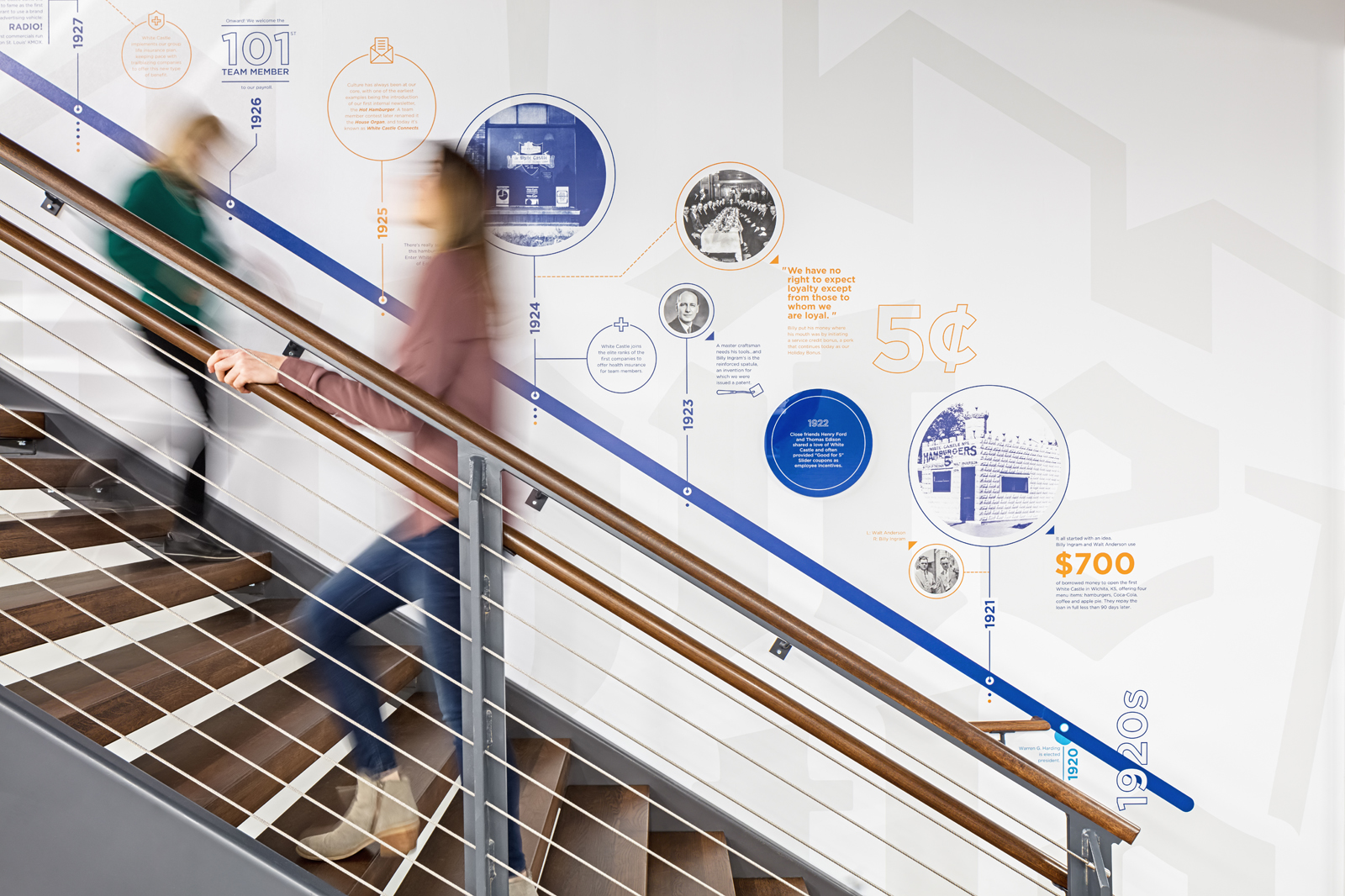
The key to celebrating culture through design lies in the ability to cultivate a unique, authentic experience for all of those who interact with your space, both external and internal. What might the journey look like for each of these individuals? Experiential design has the power to take this question to the next level – utilizing tools like technology, augmented intelligence, and interactive branding touchpoints craft a more impactful experience for each end user.
It’s what inside your office that counts.
Everyone seems to want to figure out the magic formula behind hybrid work and its impact on overall office square footage. Interestingly, we’re finding that the workplace of the future has much less to do with a shift in the overall footprint, and much more to do with a reexamination of the pieces and parts within that footprint. Breaking away from a traditional format, the focus is shifting towards creating flexible work zones within a space. Designing different areas to facilitate different styles of working not only provides employees with the ability to choose how they can work most productively, but it helps to create a more inclusive environment to support workers of all generations.
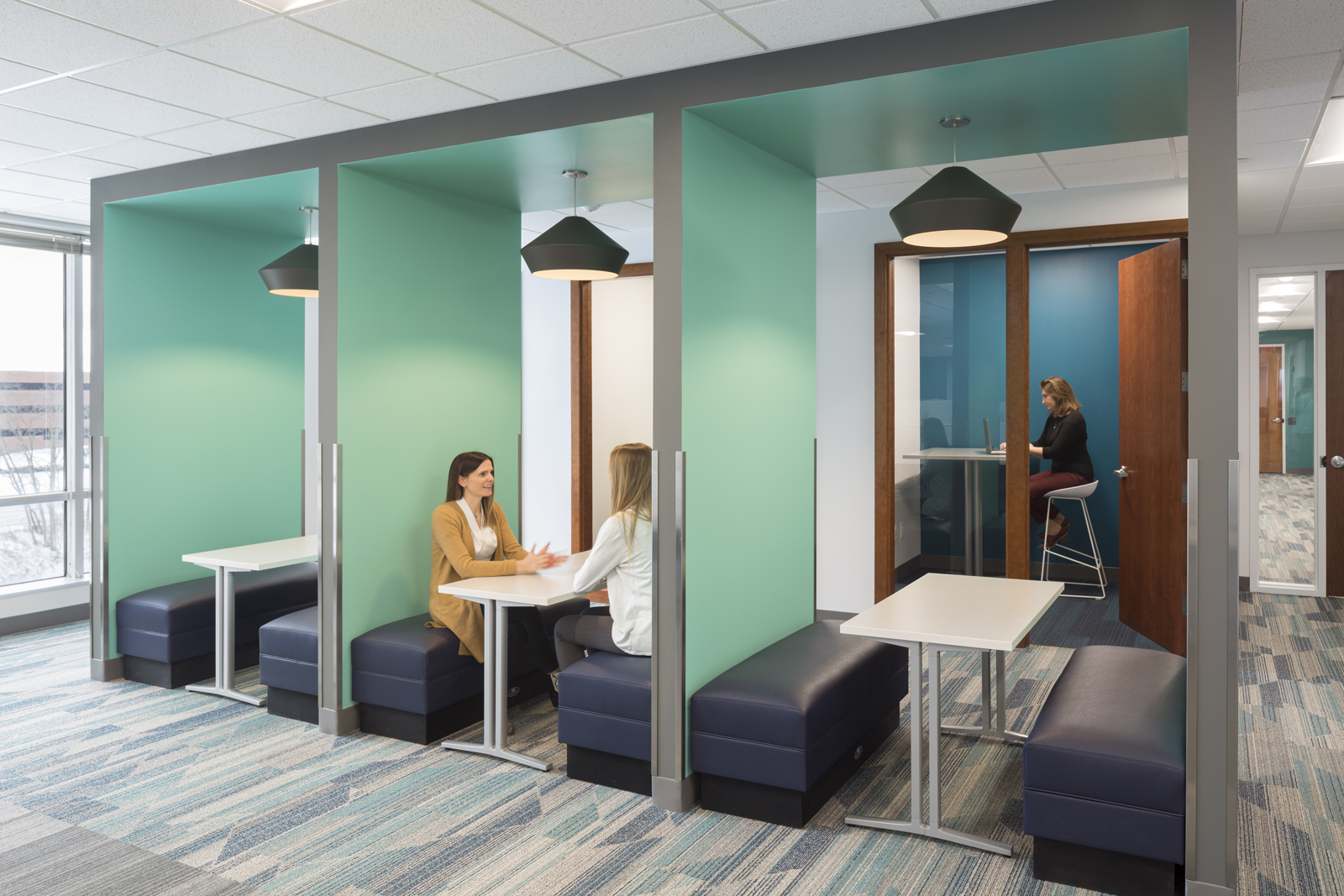
Carving out intentional opportunities within the workplace for organic cross-company collisions (I.e., the “water cooler” effect) is an effective way to foster collaboration and build culture. Activating these liminal spaces – the spaces in between, like hallways, lobbies, and stairwells – present endless opportunities to storytell, create connection, and encourage conversation through community.
In conclusion, the future of workplace design focuses less on size, and more on impact. A great workplace design will embrace the ingredients within a company that matter most – culture, community and connection.
If you’re interested in learning more about the what the workplace of the future looks like for you, or if would like to continue the conversation, feel free to email me at kaitlink@designwithma.com.
